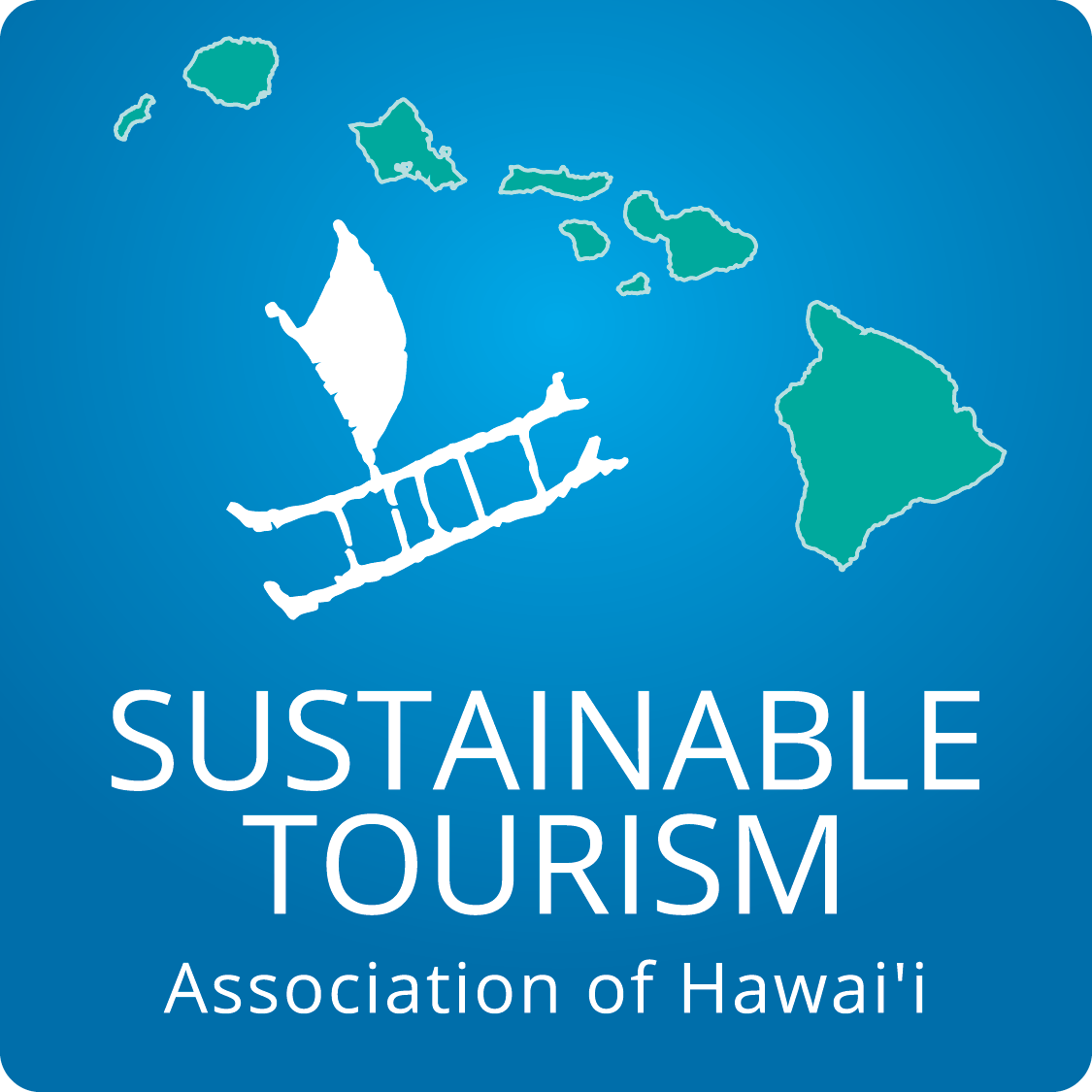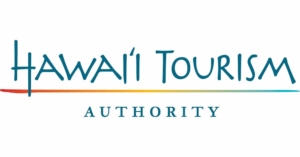History of the Certification Program
-
- 2019
Hawaii Ecotourism Association changes its name to the Sustainable Tourism Association of Hawaii and became partners with Travelife, a globally recognized certification system.
-
- 2018
HEA revised the Certification Checklist to add the seven specialized best practices sections and the Pono Traveler Program. The certification fee structure was revised in order to ensure the program was self-sustaining. HEA also has developed a complaint form and process for following up complaints that are received about and from CTOs.
-
- 2017
HEA’s Outreach Program reached two million people. HEA also collaborated on the new GoHawaii website by developing specific content on sustainable tourism.
-
- 2016
HEA received its first annual contract from HTA and tripled the number of certified tour operators (CTOs) to 50.
-
- 2015
HEA developed seven short educational videos.
-
- 2014
HEA developed the Sustainable Tourism Certification Program and certified 18 tour operators.
-
- 2013
HEA was awarded another HTA Natural Resource Award Program to update and expand the pilot program into the Sustainable Tourism Certification Program.
-
- 2011
HEA completed the pilot Ecotour Certification Program.
-
- 2009
HEA received funding from HTA’s Natural Resource Award Program to pilot the Ecotourism Certification Program and 13 tour operators were certified.
-
- 2008
HEA was involved in efforts by the Coral Reef Alliance to encourage the use of sustainable practices in marine tourism.
-
- 2007
HEA launched an Ecotour Review process.
-
- 2006
HEA partially funded a graduate student to complete a survey of HEA members to explore their interest in a certification program.
-
- 2004
HEA worked with the University of Hawaii’s Cooperative Extension Service on the Ke Ala Moa’e -The Tradewind Trail project and was awarded a Keep It Hawaii certificate of merit in the “special” category.
-
- 2001
HEA investigated a tour operator certification program and concluded that Hawaii was not ready for a formal certification program because a permanent funding source did not exist for the program.
-
- 1999
HEA developed E Malama, an ecotourism manual for Hawaii written by Barbara Mills, funded by Employers Training Fund, Department of Labor & Industrial Relations, Workforce Division, published by HEA and co-sponsored by Kapiolani Community College’s Interpret Hawaii Program. This manual is still used today by the Interpret Hawaii Program.
-
- 1995
HEA was granted 501c3 status
Origins
The creation of a statewide STAH certification program tailored to the unique needs of the Hawaiian Islands started with the development of E Malama, The Ecotourism Manual for Hawaii written by Barbara Mills, funded in 1999 by Employers Training Fund, Department of Labor & Industrial Relations, Workforce Division, published by STAH and co-sponsored by Kapiolani Community College’s Interpret Hawaii Program. The purpose of the document was to train tourism businesses in ecotourism principles relative to Hawaiian culture. This manual is still used today by the Interpret Hawaii Program.
With grant support from the Hawaii Tourism Authority (HTA) in 2001, STAH conducted workshops on Oahu and Maui in order to educate STAH members and other business operators using E Malama. STAH also worked with several other organizations to explore the creation of a certification program to ensure the authenticity and accuracy of cultural information shared in tours and other activities involving visitors. The conclusion among those participating in the discussion was that Hawaii was not ready for a formal certification program because a permanent funding source did not exist for the program.
STAH was also involved in efforts by the Coral Reef Alliance in 2008 to encourage the use of sustainable practices in marine tourism. The Coral Reef Alliance worked with local stakeholders and marine recreation businesses to develop the West Hawaii Voluntary Standards for Marine Tourism and promulgates these standards by entering into a Standards Implementation Agreement (SIA) with marine tourism businesses. A business that signs the SIA agrees to “allow, support and facilitate the assessment of the standards through several methods: 1) passenger/client exit surveys (administered onsite or online); 2) self-assessment questionnaire; 3) Environmental Walk Through (EWT); and 4) anonymous third-party community participation and feedback…” To date, over 30 marine recreation businesses have adopted the West Hawaii Voluntary Standards.
In 2006, STAH partially funded a graduate student to complete a survey of STAH members to explore their interest in a certification program. The thesis concluded that members supported a certification program as long as it was simple and inexpensive[1]. Members hoped that consumers would be willing to pay more for certified ecotourism products and/or services and that certification would promote ecotourism across the State.
As a result of these conclusions, an STAH committee developed a review process for ecotourism operators based on the information about best practices found in other certification program and on the content of E Malama. A small number of ecotour operators were reviewed, but the program has had very little visibility or participation across the State.
Given today’s socio-political climate and the increased awareness of sustainability issues, STAH wanted to expand the review process to become an ecotourism certification program.
Pilot Program
In 2009, STAH received funding to achieve this goal from HTA’s Natural Resource Award Program. The following sources of information were used to develop the pilot ecotourism certification program:
- Green Globe 21 International Ecotourism Standard (Green Globe, Asia Pacific)
- Nature and Ecotourism Accreditation Program (Eco Australia)
- Sustainable Travel and Ecotourism Program (Sustainable Travel International)
- A Simple Users’ Guide to Certification for Sustainable and Ecotourism (TIES, Rain Forrest Alliance, CREST)
- Global Sustainable Tourism Criteria (The Partnership for Global Sustainable Tourism Criteria)
- Peer Review Process (Sustainable Tourism Association)
- Putting Traffic Lights on the Road Less Traveled: Ecotourism Certification & its potential for Hawaii (Wendy Bauckham, 2005)
- West Hawaii Voluntary Standards (Coral Reef Alliance)
STAH with the strategic support of Dr. Linda J. Cox, Dr. John Cusick, and Amber O’Neill reviewed, and discussed these documents in order to formulate the first draft of the pilot program which includes a variety of best management practices. Linda J. Cox, PhD has served over 30 years as a Community Economic Development Specialist in the University of Hawaii at Manoa, Department of Tropical Agriculture and Human Resources. Dr. John Cusick is an Assistant Specialist, University of Hawaii at Manoa, Environmental Center. In addition to their individual work in sustainable tourism, Drs. Cox and Cusick have worked together for the past seven years doing research, instruction, and community outreach in the area of sustainable tourism and ecotourism. Amber O’Neill is a consultant who worked with STAH for more than three years and assisted Drs. Cox and Cusick in various research and outreach efforts. Additionally, Gail Suzuki-Jones from the State Department of Business, Economic Development and Tourism (DBEDT) provided research and in-kind support of the project to integrate built environment best practices.
Upon approval of the pilot program from the STAH Board of Directors, thirteen tour operators were certified in the 2011 pilot effort. While the pilot effort did result in certified businesses, the pilot program needed some revision to bring more specificity to the best practices, a wider appeal to tourism businesses and a more robust scoring system. At the same time, STAH needed to develop more capacity to support a statewide certification program including an outreach program in order to educate tourism businesses, residents, and visitors about the benefits of a certification program.
Current Program
In 2013, STAH was awarded another grant from HTA’s Natural Resources Program to:
1. Refine the pilot certification program to integrate the West Hawaii Voluntary Standards for Marine Tourism into the HEA’s Sustainable Tourism Certification Program.
2. Develop capacity for the further expansion of the program statewide that includes an outreach effort to educate businesses, visitors and residents about HEA’s Sustainable Tourism Certification Program, a cadre of trained evaluators and group of certified businesses.
To attain these goals, STAH hired Chris Barzman to consult as the Grant Project Manager for the 2013 project. Mr. Barzman brought over a decade’s worth of experience in tourism from both the operator and business development perspectives, experience working on the Hawaii Green Business Program at DBEDT, as well as project management expertise. Additionally, to assist with the integration of the West Hawaii Voluntary Standards, STAH recruited Liz Foote, Hawaii Field Manager for the CORAL Reef Alliance. Dr. Linda Cox continued to support the development of the program by serving as the Project Chair. STAH Board Members and volunteers worked hundreds of hours to ensure that the program continued to develop and improve.
As part of the development of a the current checklist, STAH Board Members and Evaluators also participated in two “test” evaluations of both Atlantis Submarines and Kualoa Ranch. Through these trainings, the program was revised to reflect practical applications of the checklist and methods for consistent evaluation and interpretation were developed.
The result of these efforts resulted in a number of significant modifications to pilot program. The following is a list of the major highlights:
- Rebranded as the Sustainable Tourism Certification Program (previously Ecotourism Certification) to better identify the purpose of the program.
- New certification scoring system, intended to be adaptable to the various tour operations being considered.
- Transition to from a multi-tiered rating system to a dichotomous one, intended to increase participation and reduce conflict over final certification.
- Funding mechanism built into the program to sustain the program.
- Integration of the West Hawaii Voluntary Standards as well as recognition for participation in other certification programs.
- Training and development of a cadre of Evaluators across the State.
- Development of an integrated marketing communications plan to raise awareness.
- Economic incentives (i.e., advertising, press outreach, etc.) for tour operators to participate.
- Research to track the impact of the program.
[1] Wendy Keala Bauckham. Putting Traffic Lights on the Road Less Traveled: Ecotourism Certification & Its Potential for Hawaii. May 2005. MA Thesis in Geography, University of Hawaii at Manoa.



